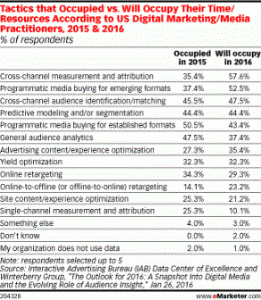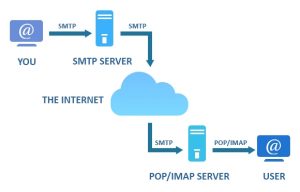My colleague Paul recently wrote about outsourcing your blog to the perfect writer. In his post, he briefly touches upon the concept of writer briefing, and how different businesses order blogs. We work with dozens of clients on a weekly basis, and they all have their own approach to choosing the themes that we write about.
No two companies are the same in the way they approach this. But getting the strategy right is key to getting ROI from your content, as well as ensuring that the relationship between client and blogger is productive long-term.
3 Types of Brief
In his article, Paul mentioned at the three types of brief that we usually work from when we’re blogging for businesses. I’ll quote the details here for ease of reference:
- Full, detailed brief: The client provides clear instructions on the topic and the angle for the blog, with a title and links to relevant material to research.
- Title only: The client has a title or topic in mind for the blog, but the detail and the research are left to the writer.
- Open brief: This amounts to not really providing a brief at all. The writer is left to come up with any topic they deem relevant, within guidelines agreed at the start of the service.
As with most content writing strategies, there is no hard and fast rule about which is ‘better’. But there are certainly pros and cons to each approach.
1. The Detailed Brief

Full briefs are precise guides with very little wiggle room for the blogger. Often, the client will do a fair amount of research to develop a full brief. They’re looking for the writer to pull everything together, rather than setting out to create their own narrative.
They’re looking for the writer to pull everything together, rather than setting out to create their own narrative.
Pros: The client generally gets what they want at the end, with very few change requests. That’s because the content writer doesn’t have that much space to deviate from the brief. This cuts down on the number of changes and can result in a faster turnaround for everyone, so better ROI on the project as a whole. It’s a good way to work if you have a very precise content strategy in mind.
Cons: The client can spend a lot of time duplicating the blogger’s work. That’s because the blogger will generally have to go out and retrace the client’s steps. Also, it’s not unusual for a full, detailed brief to be longer than the resulting blog; I have personally seen briefs of 1,200 words for a 500-word article. While there’s nothing wrong with being very clear about requirements, it can be inefficient to over-work the brief to that extent.
When should you supply a full, detailed brief? If you’re working as an intermediary for another company, and the content will be passed on to someone else, a full, detailed, brief can save you a lot of time processing changes. So detailed briefs work well for agencies that are under strict instructions. But avoid this approach if you’re trying to create a large amount of content. Writing a brief that’s double the length of the resulting blog simply isn’t a sustainable approach.
2. Title Only

If you have a pretty good idea about what you want to cover on your business blog, you can supply a list of titles or themes for your writer to follow.
You want to keep your writer on-topic while allowing them a certain amount of freedom to explore the subject for themselves.
Pros: Coming up with titles, or topics, is a quick and easy process. It gives the blogger an idea of what’s important to you, without pinning them down to a precise narrative, and it lets you have a say in the creative process.
Cons: Even though you’ve supplied a title, the writer doesn’t have anything else to go on. So you might get something back that wasn’t exactly what you had in mind. This can cause tension between client and writer. Perhaps the title didn’t provide enough guidance or wasn’t clear enough about the direction of the piece.
When should you supply a title? Title-only briefs are great for hands-off clients that still want to steer the topics on their blog. They also work well in the early days of the relationship when clients have lots of ideas. But as a client, you need to work with a blogger that you can trust. Put an agreement in place that specifies what happens if the content isn’t quite right. For example, maybe you could agree that minor changes are free, but major rewrites are billable.
3. Open Brief

The open brief is essentially a free pass for the blogger. You let them write what they want, within your niche, and you don’t steer the topics in advance.
They know your niche, and they know what you don’t want. But you don’t provide daily or weekly direction.
Pros: The open brief method is the fastest way to get a new blog started. As long as the blogger is working within pre-defined topic boundaries, you’ll get relevant content with the minimum of fuss. If you’re working with a lot of clients and ordering white label content, this approach lets you process a huge amount of blogs with barely any effort, therefore increasing ROI.
Cons: If you don’t provide a brief, you have little recourse if you receive a blog that you don’t like. You’ll have to work with the writer to fix the content, and you might have to pay for it. If you don’t trust your writer, or they don’t have full understanding of what you do, this is a risky way to work.
When should you supply an open brief? We recommend open briefs if a business doesn’t have the resources to constantly come up with content ideas. It’s also good for agencies whose clients are happy to let the content writer choose topics. But it’s critical that there is a relationship of trust. If the blogger goes wildly off-topic, you have the right to ask for the content to be changed. But if you just don’t like the topic that’s been chosen, it’s more of a grey area.
Research Doesn’t Always Cost Extra
The approach you take to briefing a blogger depends on your own resources, as well as your attitude towards your blog generally, and the relationship you have with your blogger.
But there’s an important point to remember.
Many clients approach us thinking that they’ll pay less if they develop a full brief. That isn’t necessarily true.
For example, we offer idea generation and research to the majority of our regular customers. The only time we charge for research is if the client specifically wants pre-sight of the entire piece before it’s written, or they want to comb through the data we’ve found for themselves. Typically, that would mean that we produce complete breakdown of the article, with links and sources. It’s extra work, so we charge for it. But it’s usually not required.
If you are providing full briefs every time, and it’s eating into your day, you might want to slacken the leash. When research time is part of the package price, you may as well let your blogger do it for you. And sometimes they can find data and facts that you may not have found elsewhere.
It all helps with improving your ROI on content.
3 Things You Should Always Control

There’s certainly an argument for trusting your content writer when coming up with ideas for blogs. But there are a few things we recommend keeping a close eye on, even if you’re relaxed about the article content:
- Pricing. You should have a pre-agreed rate based on the approach you want to take. For example, we bill the same rate regardless of the briefing method (unless we’re asked to do an exceptional amount of additional research or drafting, and in that case, we get pre-approval). But not all companies work this way, and you need to be sure that you’re aware of what something will cost you. If an article is going over-budget, you should work with your blogger to pull it back.
- Word count. The length of your blogs will usually be pre-agreed, and that will determine the usual pricing. If a topic warrants a longer word count, your writer should ask you for permission before they start the work. Of course, they may choose to supply a little extra content free of charge, from time to time. In that case, most clients wouldn’t complain.
- Deadlines. It’s important that your business blog is updated with fresh content regularly. If something needs more research, it’s going to take more time. Be clear about your deadlines and make sure your writer is on board with those deadlines.
How Do You Brief Your Writer?
I’ve been a professional content writer for 7 years. I’ve worked with thousands of clients, all with different approaches to briefing. There is no correct way to brief a blogger. But I’ve learned that trust is a big factor in productive relationships.
How do you brief your writer? Could you benefit from changing your approach? You might want to gradually move from a detailed brief to a more open style of working. It’s a very safe way to set out your requirements without exposing yourself to risk.
Briefing is a tough topic to draw a conclusion on. It’s really about what works for you and the company that you’ve chosen. But as a general rule, the less work you duplicate, the more productive everyone will be.
Digital & Social Articles on Business 2 Community(74)










